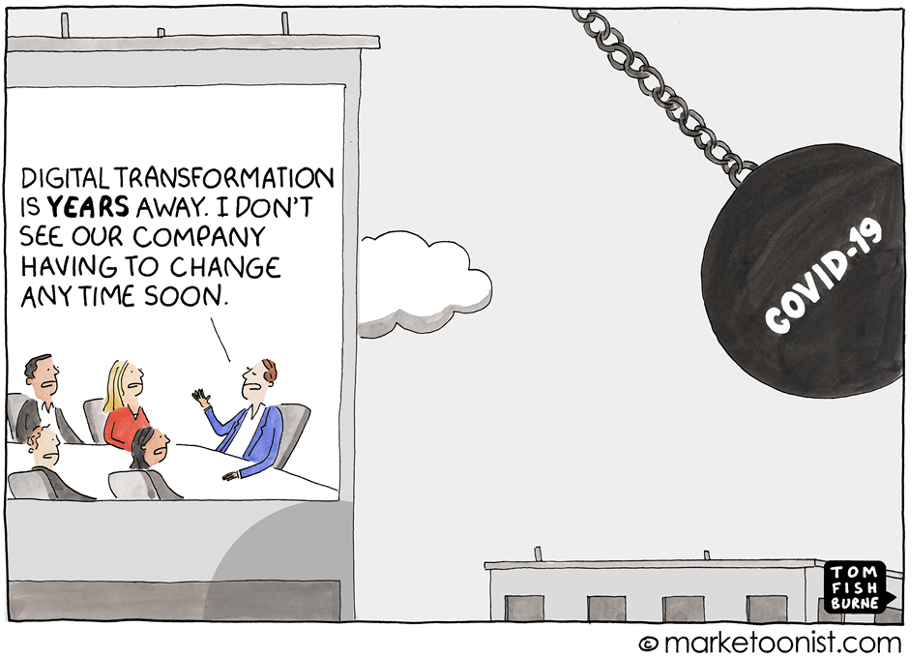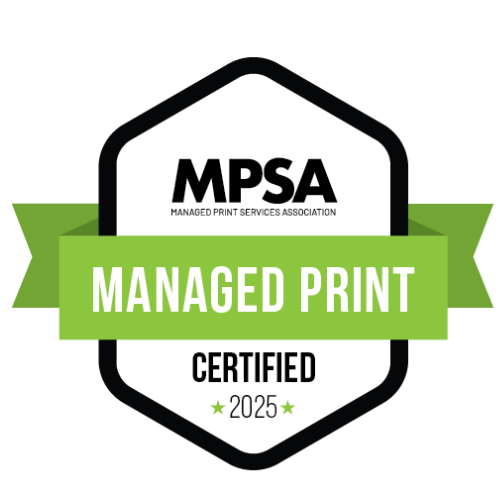Accelerating the Digital Transformation Journey
by Mitchell Filby, First Rock Consulting and Cameron Lawes, Cypher IQ Digital
In business, moving the dial on progressive change can be very difficult if the culture of that business is protective or resistant to change– unless there is a catalyst.
A catalyst, in terms of its definition, is usually more related to chemical science. However, when we consider the broader meaning, we see a “catalyst causes an acceleration of a reaction.”
COVID-19: The Catalyst for Change:
I think it is fair to say that COVID-19 has accelerated a reaction. A digital transformation reaction. Not by choice, but by a requirement for businesses to survive in a dynamically changing environment that has no clear roadmap for navigation.
I know that may sound a little dramatic; however, the push or drive to digitally transform a business was not getting a lot of traction except for the early innovators, adopters, or new entrants that entered the market to outcompete the slow moving or less agile businesses pre-2019.
Many businesses and their executives, including boards of directors, were caught short. They thought injecting or integrating a mobile platform into their existing business architect meant that they were digital or could compete in a digital environment against their peers.
However, this was not the case. A mobile or digital strategy is not simply a bolt-on or plug-in solution. A business that truly understands the digital narrative needs to have a digital strategy and an embedded digital practice at is core.
Digital is much more than just a channel, distribution initiative, or method to market.
A business that embraces a digital environment at its core is a business that understands where the game is going to be played and by whom – that is – across digital ecosystems by digital natives.
We are in a new world of untethered, connected, and highly mobile users who now consume goods and services through traditional purchasing methods. A world with increasingly adopted options of either consumption-based or subscription-based consumption options.
The other major advantage of being a digitally enabled business is speed, which is a major competitive advantage to anyone in any business or market. First-mover advantage is a major ally in a digital marketplace.
The Path of the Digital Transformation Journey
So here is the big question: why are businesses struggling to digitize their business? Unfortunately, one of the major problems is that the term “digital transformation” has a lot of different meanings depending on who is using the term.
Different businesses across the technology ecosystem markets use the term differently or with a different meaning depending on what they are positioning and selling. Technology consultants, ERP vendors, software application vendors, technology hardware vendors, technology integration vendors, and so on sell and position the digital transformation story differently. Hence why there is sometimes a lot of confusion trying to educate and define what a digital strategy should incorporate and how best to execute and implement a digital roadmap across a business.
A Digital Strategy that Supports the Digital Transformation Journey:
For the purpose of keeping this really simple, digital transformation is the continual process of utilizing technology to ultimately achieve your business strategy. Let’s break this down even further. Given the incredible benefits technology can provide businesses, every business should really have a digital strategy as part of achieving the overall business strategy.
Therefore, as a framework, a digital strategy can be broken down into two types of provision.
- Digital Business Process Optimization: This is the process of improving internal productivity and the customer experience. Business optimization can provide quick wins for every business.
- Digital Business Process Transformation: Utilizing technology to implement new products and services which will provide new revenue and / or implementing technology to run new business models. Business transformation is often a longer-term implementation aligned to very specific requirements.
Both of these provisions will produce similar digital transformation outcomes.
- Business process enhancement,
- Improved customer engagement,
- Enhanced employee empowerment,
- Business unit and employee planning and measuring, and
- Operational transparency via data driven decision making.
By linking these outcomes back to your business strategy, you can then start to realize the potential within the business to implement the correct solution.
So Where Should a Business Start?
Obviously start with a business strategy. Digital business transformation can take longer to implement. But if you are looking for some quick wins to ignite digital transformation in your business, then look at the processes within your business where you will achieve the greatest business process optimization.
You can start by looking at departments and business processes. Here are some examples of low-hanging fruit where you can get some immediate benefit.
- Accounting – payable, receivable, payroll;
- Human Resources – job application, onboarding, review, contracts;
- Work Health and Safety – investigations, inspections, policy and procedures;
- Sales – orders, customer engagement; and
- Customer Engagement – communication, notification information sharing.
Or if you are struggling to identify the process and how business process optimization can benefit you, keep an eye out for these indicators.
- Paper, paper and more paper. Your business is moving as fast as paper can move through your business.
- Manual entry of data into applications.
- If you are spending money on postage, you are communicating with your customers via paper, which slows down processing and causes you to lose control of the information.
- You should not be increasing prints or associated print costs.
- A great piece of software, but if you are cutting and pasting data to maintain some form of database or reporting tool you are also wasting time!
- Lost information in hard copy or soft copy. There should not be any reason to lose information in today’s environment. Unless you are still manually filing hard copy documents in filing cabinets or soft copy documents into network folders.
What is the Importance to the Office Printing/Document Imaging and Managed Print Services Industry?
Well, it is important and relevant for a number of reasons.
It goes without saying that your clients are looking for help and assistance to accelerate their own digital transformation journey.
However, what is crucial for all of the service providers (OEMs, independent dealers, and all channel providers) who operate within the office printing/document imaging and Managed Print Services industry to recognize is that your customers are asking themselves this one question: “You may be the one who got me into print, but are you the one who can get me out of it?”
To date, customers do not see a lot of effort and success from many of their providers in the market. They have heard all the stories and have been given all the commitments under the sun – but the unit device numbers and print volumes inside their business have not changed too much.
More and more end clients are now wondering who they should talk to. Unfortunately, they have reduced their confidence and trust that this once dynamic industry has the business model capacity and commitments to change and transition going into the future.
However, we know better. We know there are true business leaders and business entrepreneurs across our industry, all of whom are ready and are currently well positioned to take the lead of the first mover advantage and change the way they engage with the customer:change the conversation, transition their business models, evolve away from transactional sales to consultancy-lead conversations, and truly help their customer digitally transform.
Here is a key insight that I will share with you. When you do this – it will not mean that the client will never print – or will never have a requirement to print. Human nature or human behavior will still dictate, and many humans still like to use paper to communicate. It is not a millennial or age thing – it is more of a tactile or creative aspect.
We all know change is happening — and at an accelerated rate. If you do not evolve, your competition will or more to the point – they already have.
Don’t let your competition out-compete you.



